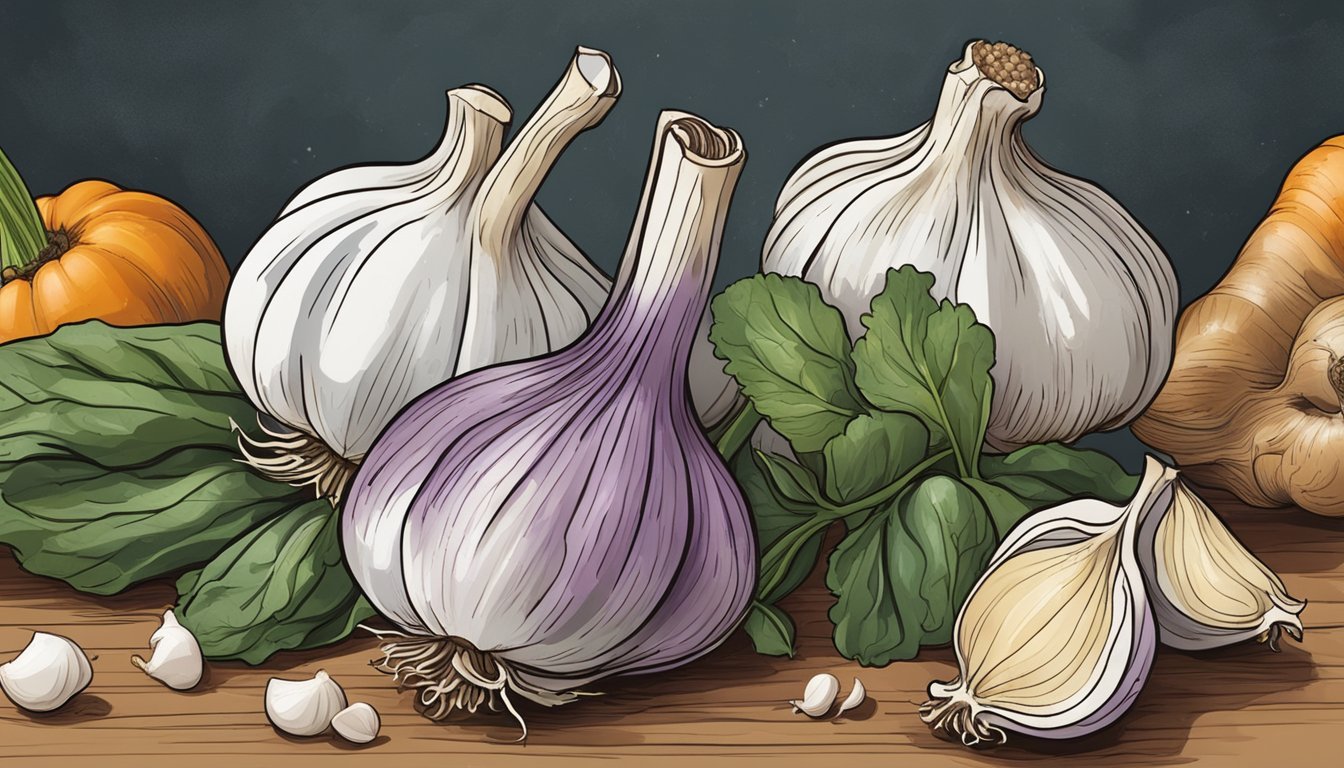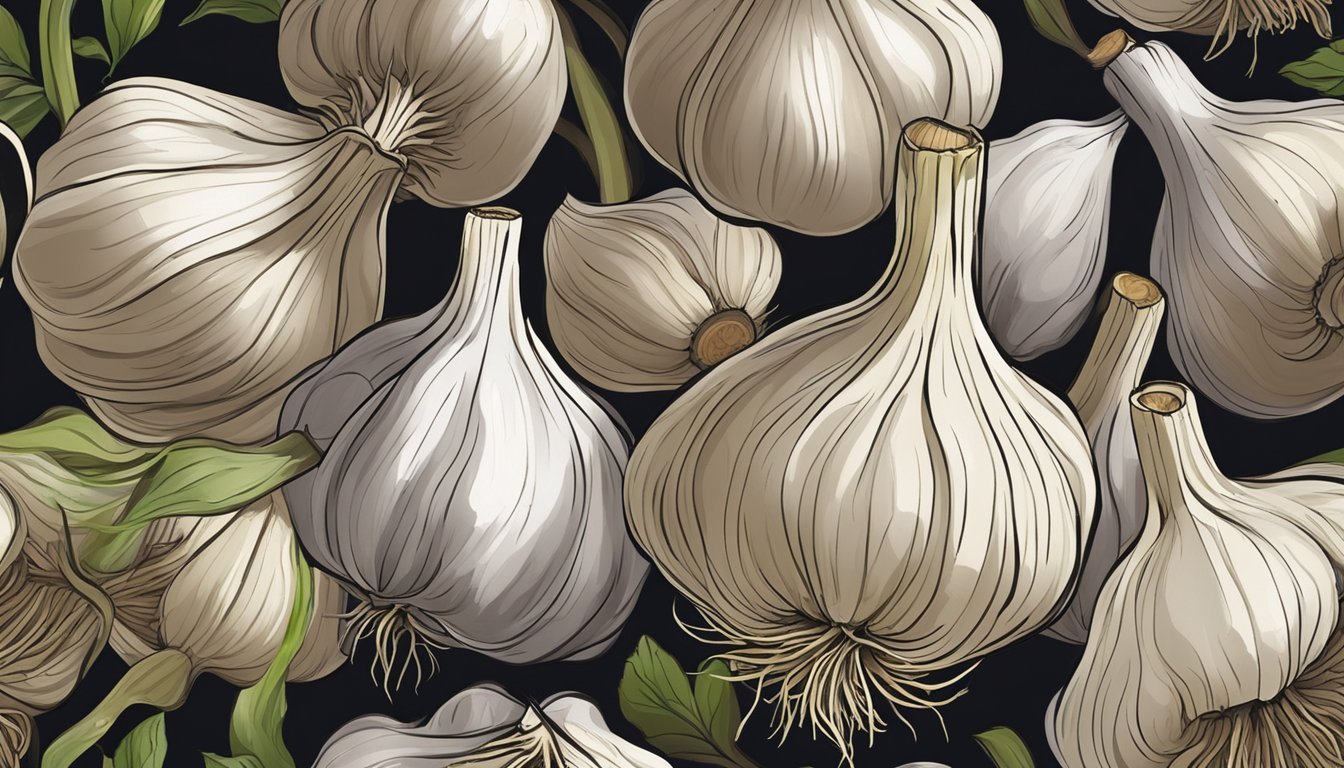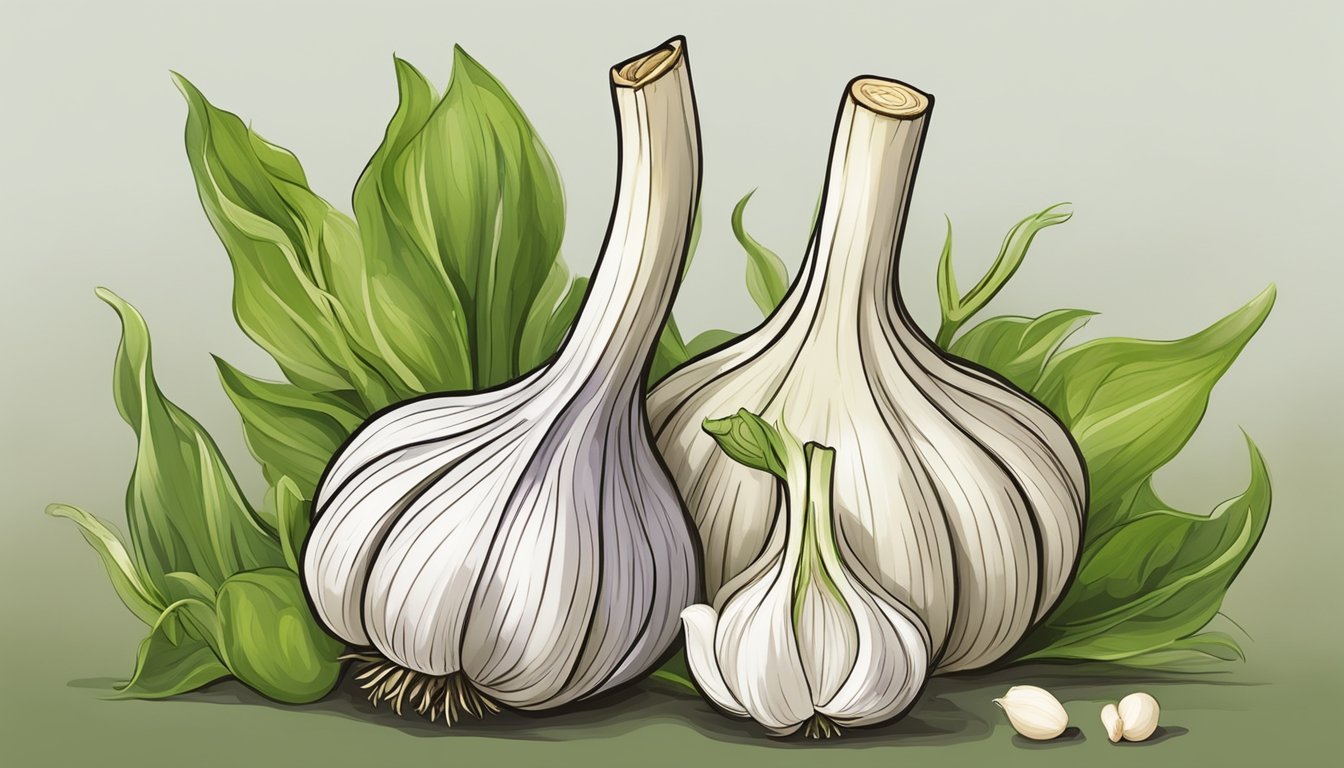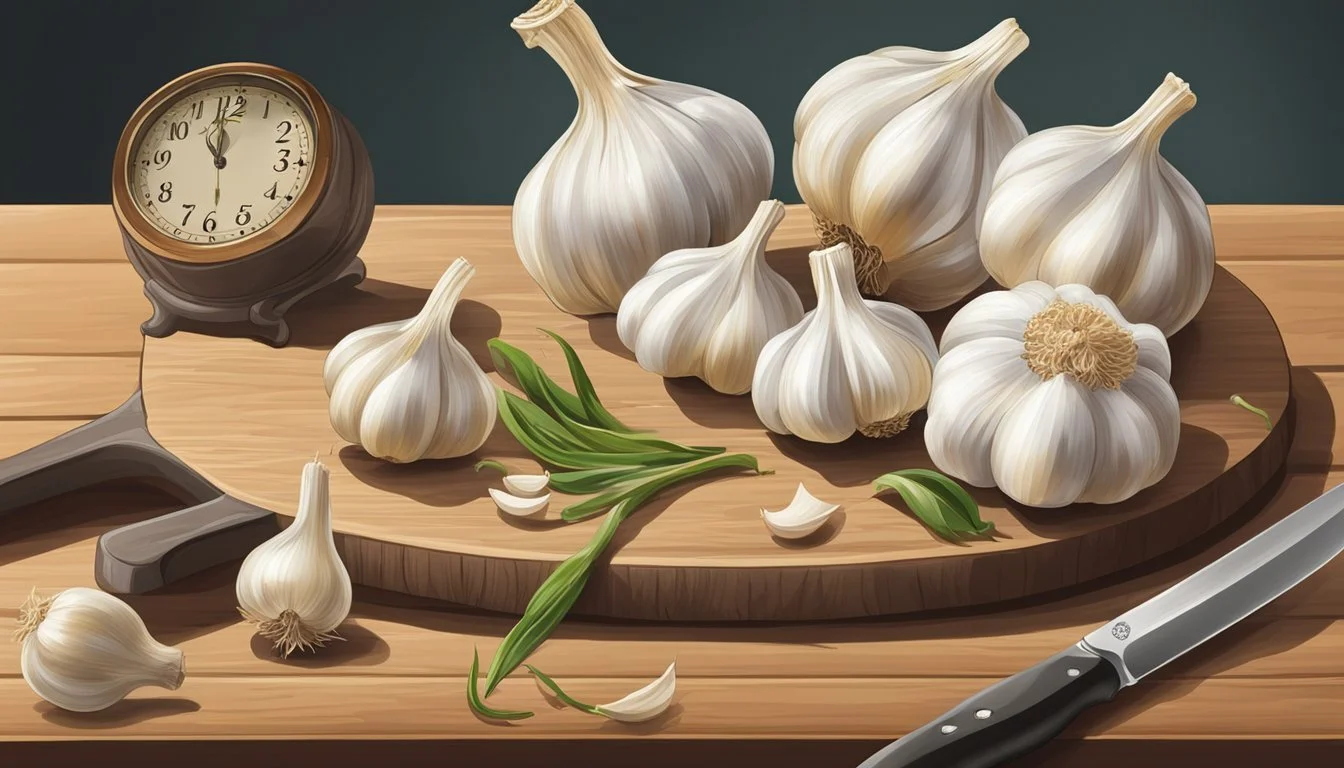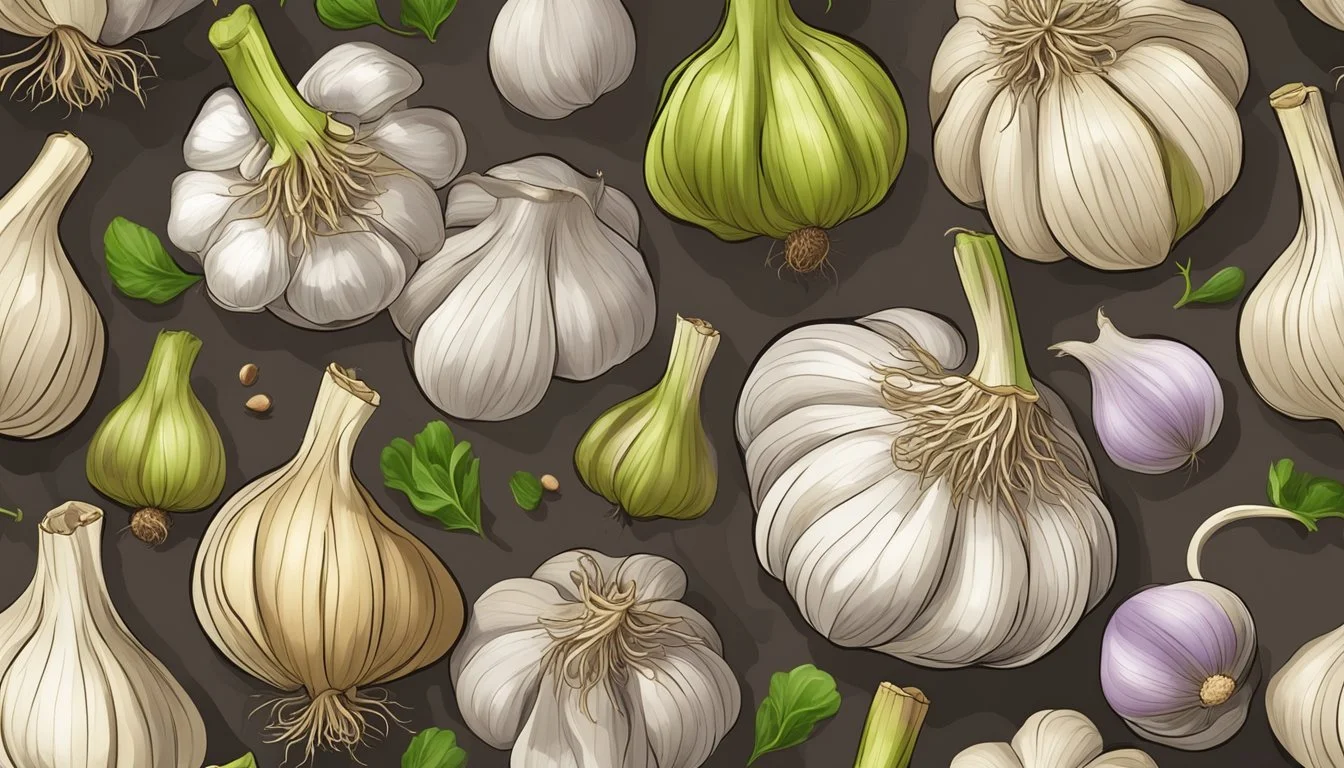How Long Does Garlic Last?
Shelf Life and Storage Tips
Garlic (What wine goes well with garlic?) is a staple ingredient in many kitchens due to its distinctive flavor and health benefits. It is also well-regarded for its relatively long shelf life compared to other fresh produce. Generally, a whole, unpeeled head of garlic can last up to six months when stored under optimal conditions. These ideal conditions include a dry, cool place away from direct sunlight, which helps to maintain garlic's quality and prolongs its usability.
Storing garlic properly is crucial for extending its longevity and preventing spoilage. Individual unpeeled cloves can remain fresh for about three weeks. Once the head has been broken and cloves are exposed, they begin to lose moisture and their lifespan is reduced. Signs of spoilage include brown spots, a soft texture, and an unpleasant smell. To maximize its shelf life, garlic should not be refrigerated, as the humidity can encourage mold growth. Instead, it should be kept in a well-ventilated area to prevent any accumulation of moisture.
Understanding Garlic and Its Varieties
In exploring the world of garlic, it's crucial to recognize the distinct types and their unique life cycles, as well as the health advantages they offer. This section will provide a concise overview of these aspects to enhance one's knowledge of garlic varieties.
Types of Garlic
Garlic is typically categorized into two main types: softneck and hardneck.
Softneck Garlic (Allium sativum var. sativum):
Known for its pliable stalk and abundant clove production.
Commonly found in supermarkets.
Varieties include 'Artichoke' and 'Silverskin'.
Longer shelf life.
Hardneck Garlic (Allium sativum var. ophioscorodon):
Characterized by a rigid stalk and fewer cloves.
Bolts, producing a flower stalk called a scape.
Varieties include 'Rocambole', 'Porcelain', and 'Purple Stripe', with purple garlic being a subtype known for its robust flavor and striking color.
The Garlic Lifecycle
The lifecycle of garlic begins with planting individual cloves in the fall. Each clove develops into a new head of garlic, maturing over the months and ready for harvesting in the summer. Here's a brief outline of the garlic's growth phases:
Planting: Cloves are sown in well-drained soil with the pointy end up.
Winter: As temperatures drop, cloves go dormant.
Spring Growth: Warmer temperatures initiate growth, particularly in hardneck varieties that develop scapes.
Harvesting: Garlic bulbs are harvested when leaves begin to brown.
Health Benefits of Garlic
Garlic is not only valued for its flavor but also for its potential health benefits, which include:
Antioxidant Properties: Contains compounds with protective effects against oxidative stress.
Heart Health: May contribute to improved cardiovascular health by helping to reduce blood pressure and cholesterol levels.
Garlic, in its fresh form, can be a flavorful and healthful addition to a balanced diet. When incorporating garlic into one’s meals, the choice between softneck and hardneck varieties can affect both the dish’s flavor and the potential health benefits.
Optimal Storage Conditions for Garlic
Garlic's shelf life greatly depends on storage conditions. To ensure maximum freshness for each form of garlic, it's crucial to understand the appropriate environment for storage.
Storing Whole Garlic Heads
Whole garlic heads retain their quality for longer periods when stored in a cool, dry place at room temperature. Ideally, temperatures should range between 56°F and 58°F to prevent sprouting and shrivel. A well-ventilated basket or mesh bag works well, keeping the bulbs away from direct sunlight and maintaining air circulation. Refrigeration isn't recommended as it can encourage sprouts.
Storing Peeled Garlic Cloves
Peeled garlic cloves require careful handling to preserve their integrity. They should be kept in a sealed container in the refrigerator to maintain moisture levels without becoming too damp. For prolonged storage, peeled cloves can be frozen; either placed in a tightly sealed container or wrapped in foil and then placed in a freezer-safe bag.
Storing Chopped or Minced Garlic
Chopped or minced garlic has a more limited shelf life due to the increased surface area and exposure to air. It should be placed in a small airtight container and stored in the refrigerator. For optimal freshness, use within ten days to prevent spoilage. Alternatively, minced garlic can be mixed with oil and stored in the refrigerator, but this requires careful handling to prevent bacterial growth.
Preserving Garlic for Longevity
Preserving garlic effectively extends its shelf life and ensures a year-round supply of its flavorful zest. Each method of preservation is suitable for different culinary uses and preferences.
Freezing Garlic
Freezing whole garlic heads is a straightforward process. Store the heads in a freezer bag, removing as much air as possible before sealing and placing in the freezer. Freezing chopped garlic involves spreading the pieces on a baking sheet to freeze individually before transferring to a bag. This prevents clumping and makes it easy to use just the amount needed. Garlic frozen in this manner can last several months.
Garlic in Oil Mixtures
Garlic in oil mixtures presents an alternative preservation method. Combining chopped garlic with olive oil and refrigerating keeps it usable for up to a week. It is paramount to refrigerate the mixture immediately to prevent the growth of Clostridium botulinum. For longer storage, cooking the garlic in oil first can extend its life.
Drying and Dehydrating Garlic
Drying garlic involves slicing cloves thinly and placing them in a dehydrator or a low-temperature oven until completely dry. Once dry, the garlic slices can be stored in a cool, dry place or ground into garlic powder. Properly dehydrated garlic can be stored for months without refrigeration.
Pickling Garlic
For pickling, cloves are submerged in a pickling solution of vinegar and salt, often with herbs and spices added for flavor. The pickled garlic should be stored in the refrigerator in a sealable glass jar to maintain its quality. Pickling garlic not only preserves it but also adds a unique taste suitable for many dishes.
Spoilage and Quality Indicators
When assessing garlic for use, it is essential to identify signs of spoilage and understand the effects of aging to ensure both quality and safety in culinary applications.
Identifying Spoiled Garlic
Spoiled garlic can compromise both the flavor and safety of a dish. Indicators of spoilaged garlic include:
Mold: Presence of visible mold, often white or green in color, on the cloves.
Softness: Garlic that is mushy or yields to pressure instead of being firm.
Discoloration: Brown spots or an unusual darkening of the cloves.
Unpleasant Odor: An off-putting smell that deviates from garlic's characteristic aroma.
Sprouting Roots: Green sprouts emerging from the top of the clove indicate aging, although not necessarily spoilage.
If garlic exhibits these characteristics, it is best discarded to avoid the risk of foodborne illnesses such as botulism, which can occur in improperly stored garlic, especially in anaerobic conditions like in oil.
Effects of Aging on Garlic
As garlic ages, certain changes can affect its quality but may not render it immediately unusable:
Taste Alteration: The pungent flavor of garlic may become milder or significantly alter as it ages.
Sprouting: Freshness diminishes as green sprouts appear, but the cloves can still be used after removing the sprouts.
Expiration Date: While garlic does not have a specific expiration date, its shelf life in a cool, dry pantry is typically up to six months; however, it can last much longer if stored properly in the freezer.
Texture Changes: Before reaching the point of spoilage, garlic may become less firm, signifying it is past its prime.
Proper circulation and a lack of humidity in storage areas enhance the shelf life and quality of garlic. Ingredients like salt in garlic bread do not stop garlic from spoiling, but may slightly extend its usability window by reducing moisture. Gamifying the process of storage checking can significantly prolong the usability of garlic, ensuring it contributes the desired taste and texture to dishes.
Culinary Uses and Pairings
Garlic stands out in the culinary world for its distinctive flavor profile, which enhances a myriad of dishes. It pairs exceptionally well with various herbs, spices, and seasonings to create mouthwatering meals.
Cooking with Garlic
When cooking with garlic, chefs regularly use it to lay a flavorful foundation for various dishes. Garlic cloves can be minced, sliced, or left whole, depending on the intensity of garlic flavor desired. It pairs well with oil, releasing its flavor when sautéed, a technique often used at the beginning of recipes to create a flavor base. Here are a few tips for cooking with garlic:
Use a moderate oven temperature (around 350°F to 400°F) when roasting to avoid burning while achieving a sweet, mellow taste.
If one is mixing garlic into pasta dishes, adding it toward the end of cooking preserves its robust taste.
In making garlic bread, it's best to mix minced garlic with softened butter and additional seasonings like salt and pepper, then spread on bread before toasting in the oven until browned.
Storing garlic properly is crucial to maintain its potency for cooking. Keep whole bulbs in a cool, dark place with adequate air circulation to extend shelf life.
Garlic-Infused Recipes
Garlic-infused recipes leverage the aromatic's pungency to elevate dishes. Here's how to incorporate garlic effectively:
Garlic oil is a versatile kitchen staple made by slowly infusing oil with garlic cloves; this oil can be drizzled on garden salads for added depth.
For a heartwarming meal, roasted garlic cloves can be combined with herbs and pepper to create comforting seasonings for meats or vegetables.
A simple yet flavorful recipe involves tossing pasta with garlic-infused oil, fresh herbs, and spices, serving as a testament to garlic's adaptability in the kitchen.
Incorporating garlic into recipes requires balancing its intensity with other elements, yet its ability to transform a dish is unparalleled.
Buying and Harvesting Tips
When selecting garlic, whether from a store or harvesting from a garden, quality and timing are crucial for long-lasting bulbs.
Selecting High-Quality Garlic
One should look for firm, plump bulbs with dry skins when purchasing garlic from the grocery store or farmer's market. Avoid any bulbs that have signs of mold or feel soft to the touch. Bulbs should be heavy for their size and have intact papery skins without green sprouts, which indicate aging.
Harvesting Your Own Garlic
For the garlic lover with a garden, timing the harvest is key for maximum shelf life. Garlic is ready to harvest when several lower leaves turn brown, but about five or more upper leaves are still green. Dig the bulbs out carefully, avoiding any damage to the cloves. Do not pull the garlic out by the stem; instead, use a digging fork to loosen the dirt around the bulbs. After harvesting, cure the garlic by hanging it or placing it on a rack in a well-ventilated, shady area until the outer skin becomes dry and crispy.
Creative Garlic Solutions
In seeking to extend the life of garlic, one can harness its flavor through various homemade preparations. Each method not only prolongs garlic's usability but also creates new culinary dimensions for cooking and seasoning.
Homemade Garlic Concoctions
Garlic Olive Oil: A simple infusion involves finely chopping garlic and submerging it in olive oil. This not only preserves the garlic but also imparts its essence into the oil, which is perfect for drizzling over pasta or salads.
Ingredients Uses Garlic Pasta, dressings Olive Oil Cooking, dipping
Garlic Butter: For a flavorful spread, one can mix softened butter with minced garlic. Garlic butter can enhance the taste of bread, or when melted, can be used to sauté mushrooms to perfection.
Ingredients Uses Garlic Spreads, sautés Butter Baking, cooking
Garlic Powder: Dehydrating and grinding garlic into a powder creates a long-lasting seasoning. Garlic powder is versatile, useful for dry rubs, marinades, or as a quick flavor boost.
To make: Dry minced garlic at a low temperature until brittle, then grind.
Storage: Keep in an airtight container away from heat and moisture.
Garlic Salt: By blending garlic powder with salt, one can produce a convenient condiment that imparts a garlic flavor with a saline note, excellent for finishing dishes or seasoning snacks.
To make: Mix finely ground garlic powder with salt in equal parts.
Uses: Ideal for popcorn, vegetable seasoning, or a savory topping for bread.
Conclusion and Additional Tips
Storing garlic correctly extends its shelf life considerably, allowing a garlic lover to enjoy this versatile ingredient for months. Attention to storage environment combats premature spoilage.
Final Words on Garlic Storage
Garlic's longevity hinges on proper storage conditions. Whole bulbs can last up to 5 months in the pantry and even 12 months in the freezer. It's essential to store garlic in a dry, cool, and ventilated place away from direct light to preserve its quality.
Additional Garlic Storage Tips
Pantry Storage: Keep garlic in a wire-mesh basket or paper bag with holes for ventilation to maintain dryness.
Refrigerator Tips: Store peeled cloves in a sealed container in the refrigerator for up to a week.
Freezing Garlic: For long-term storage, freeze garlic cloves or chopped garlic in oil using ice cube trays.
Remember that garlic has no set expiration date, but one can assess its freshness by examining the roots and the firmness of the cloves. If the roots are sprouting or the cloves feel soft, it's time to replace the bulb.

